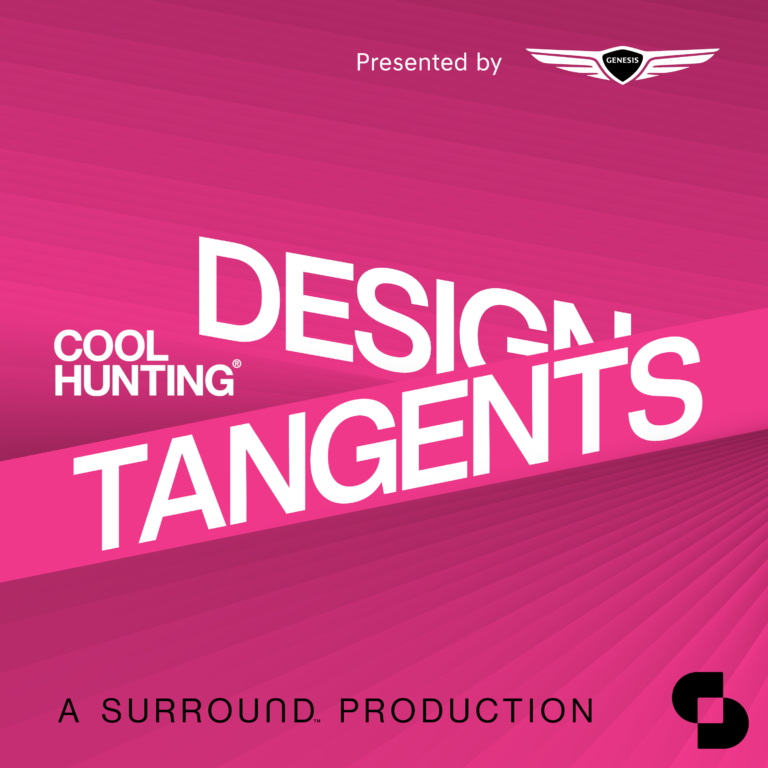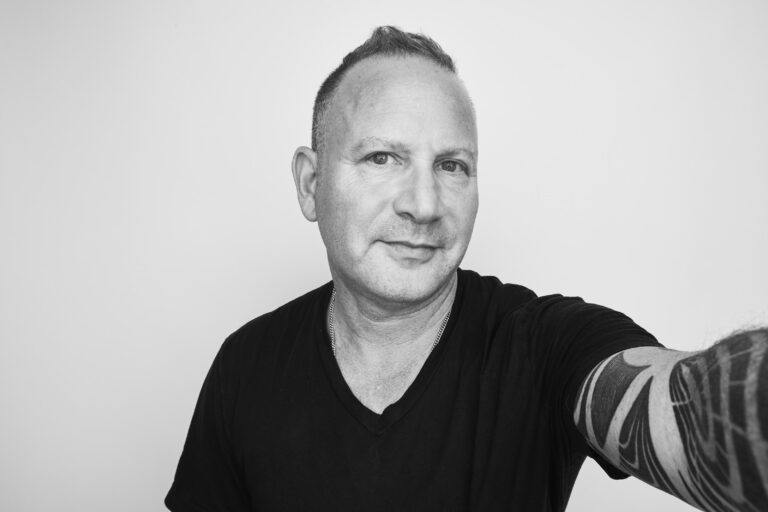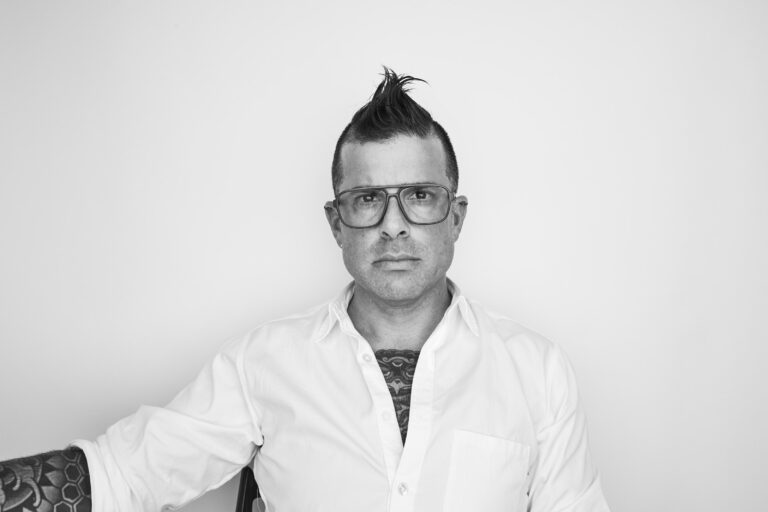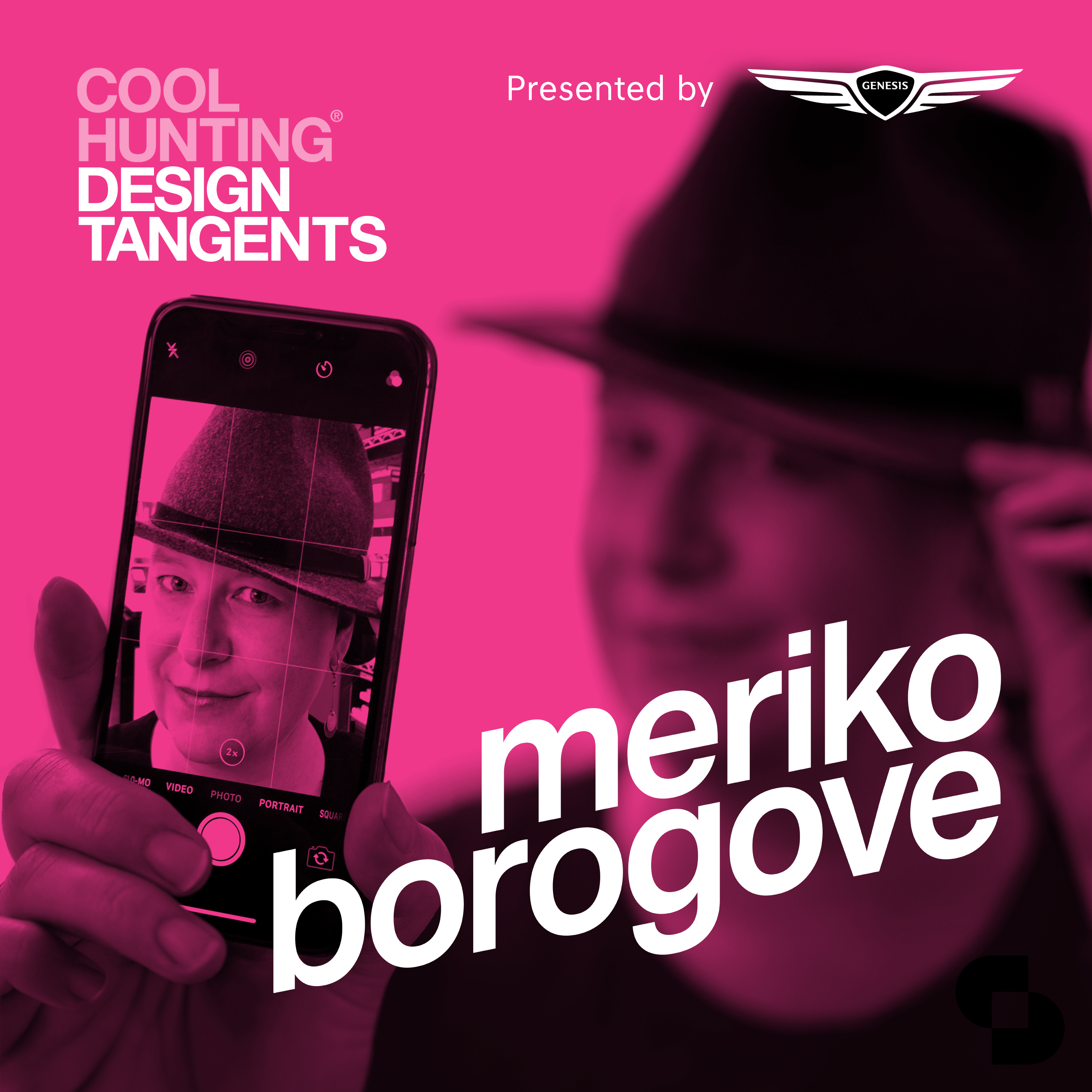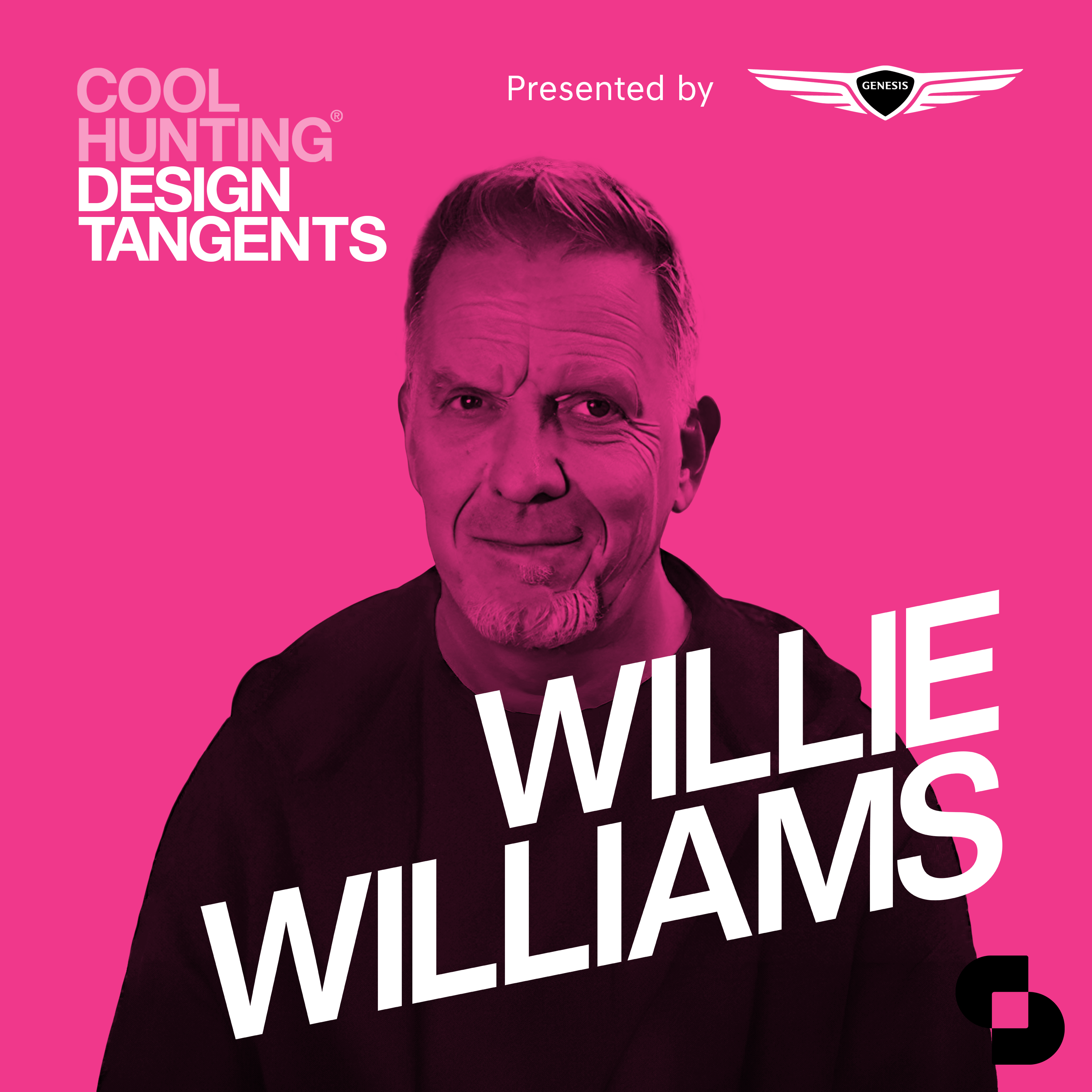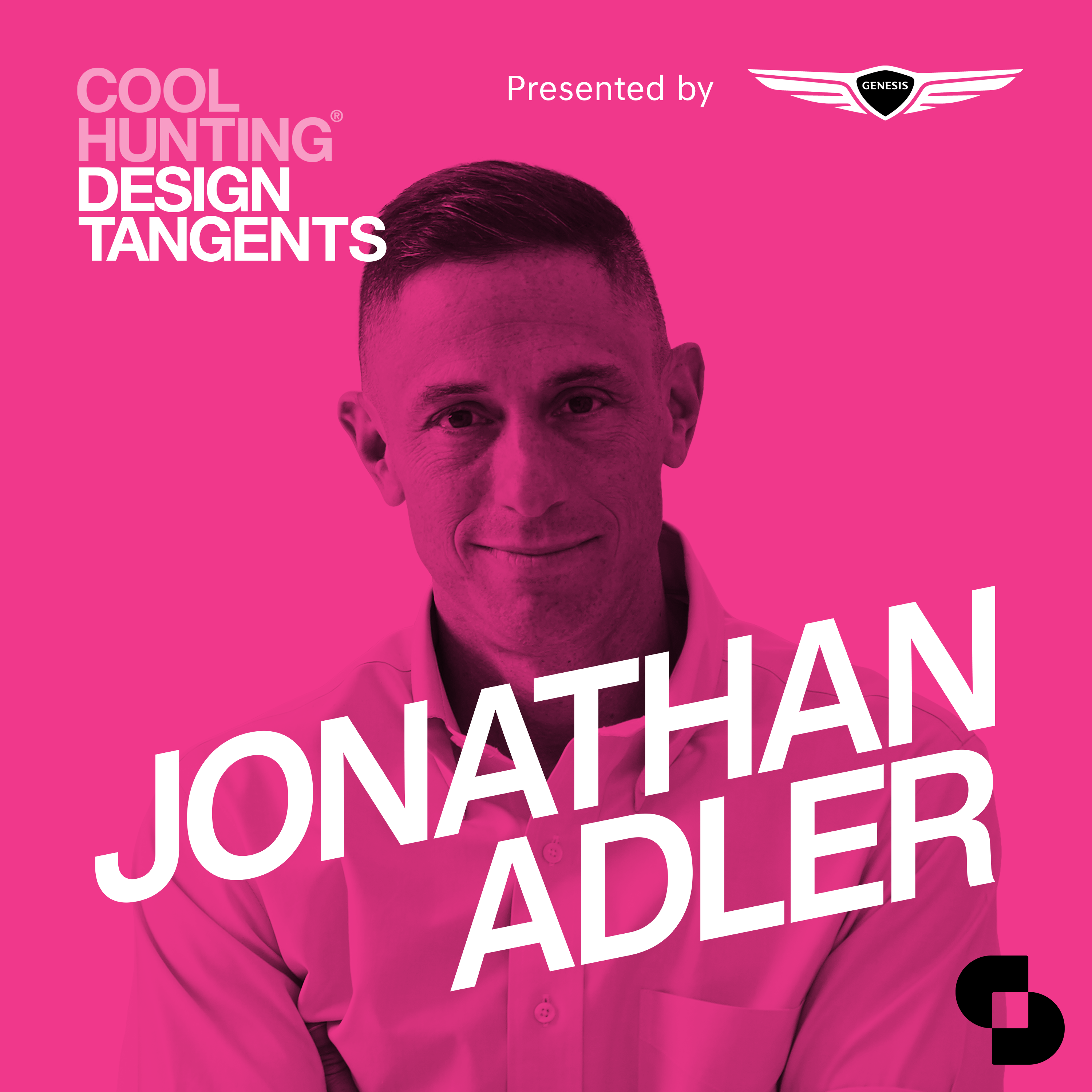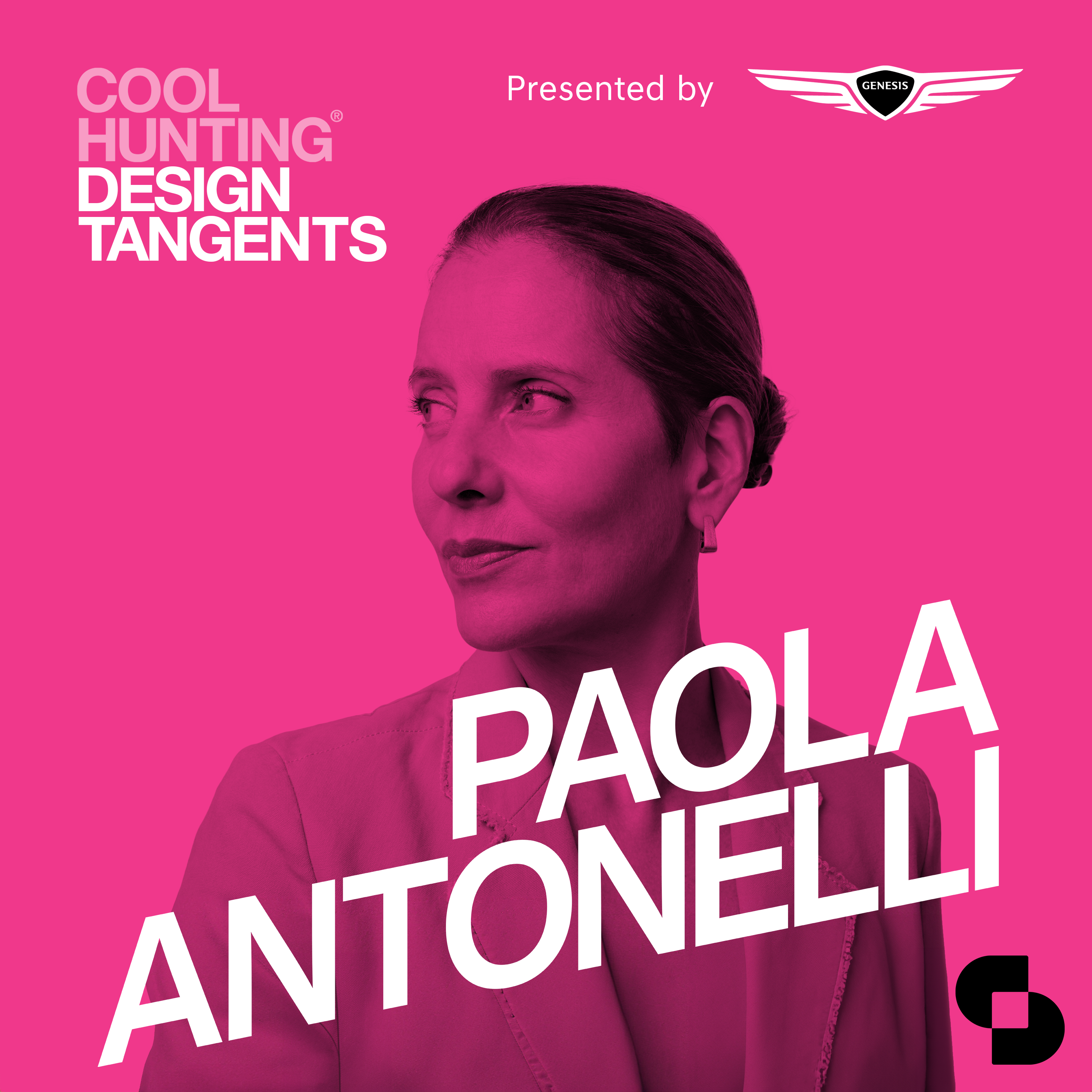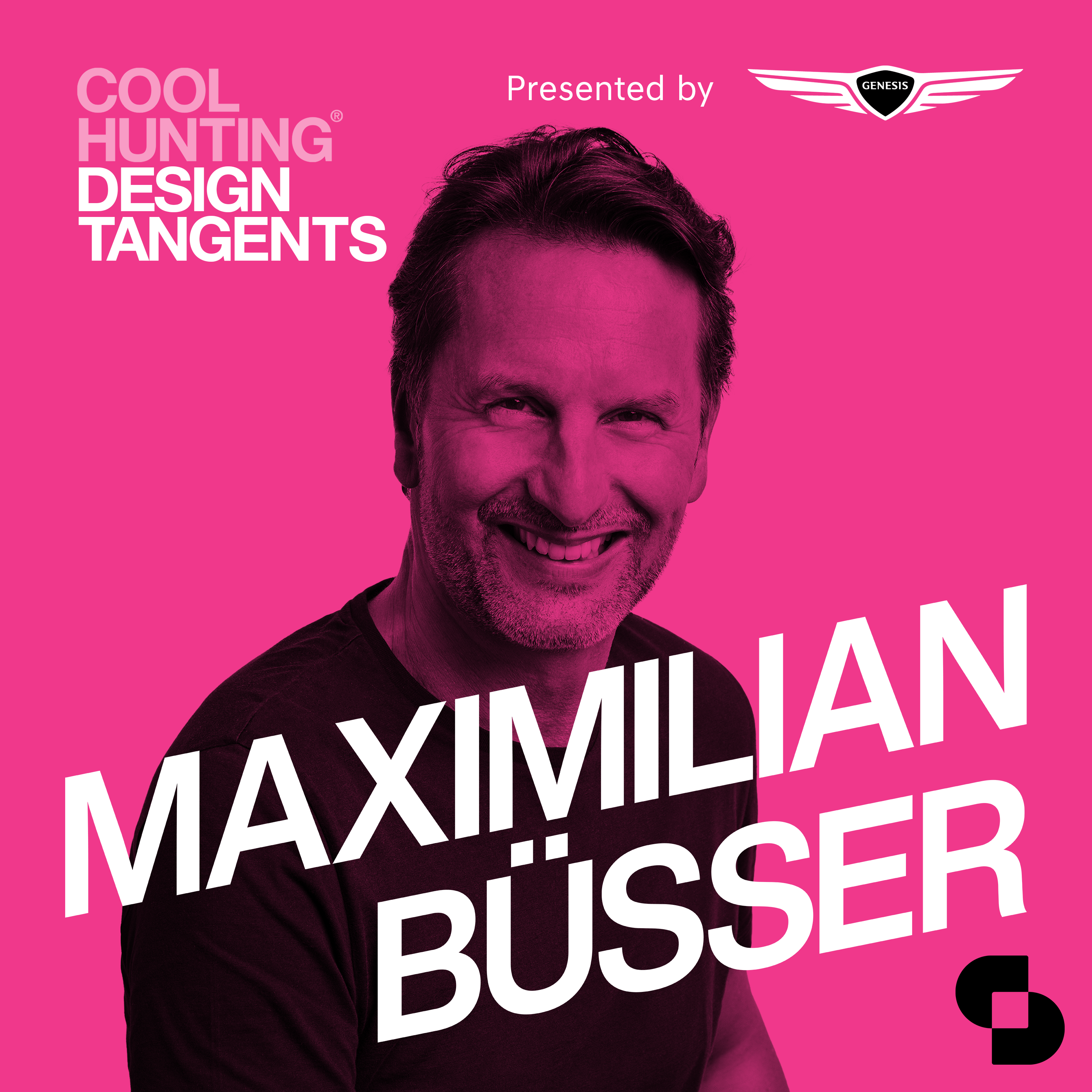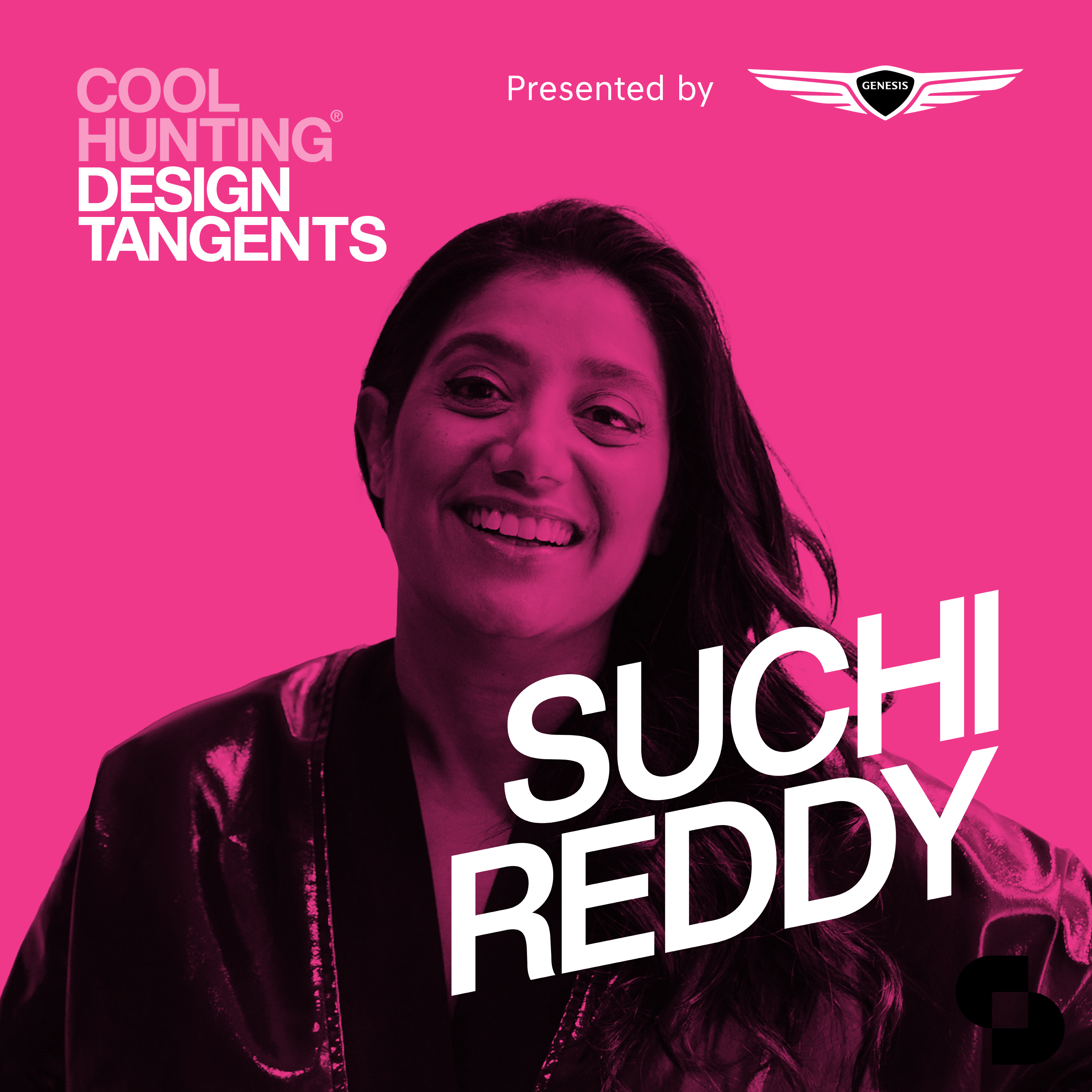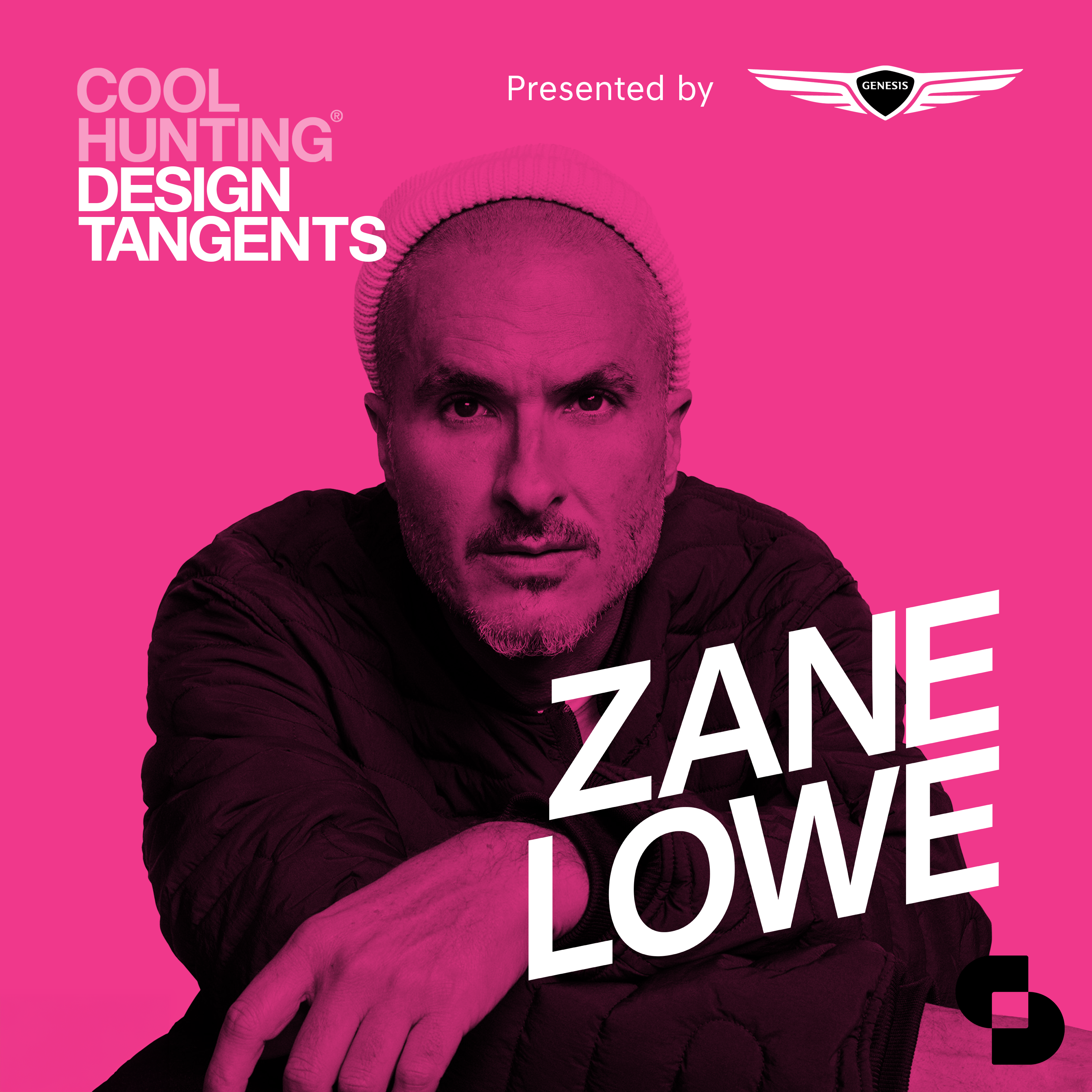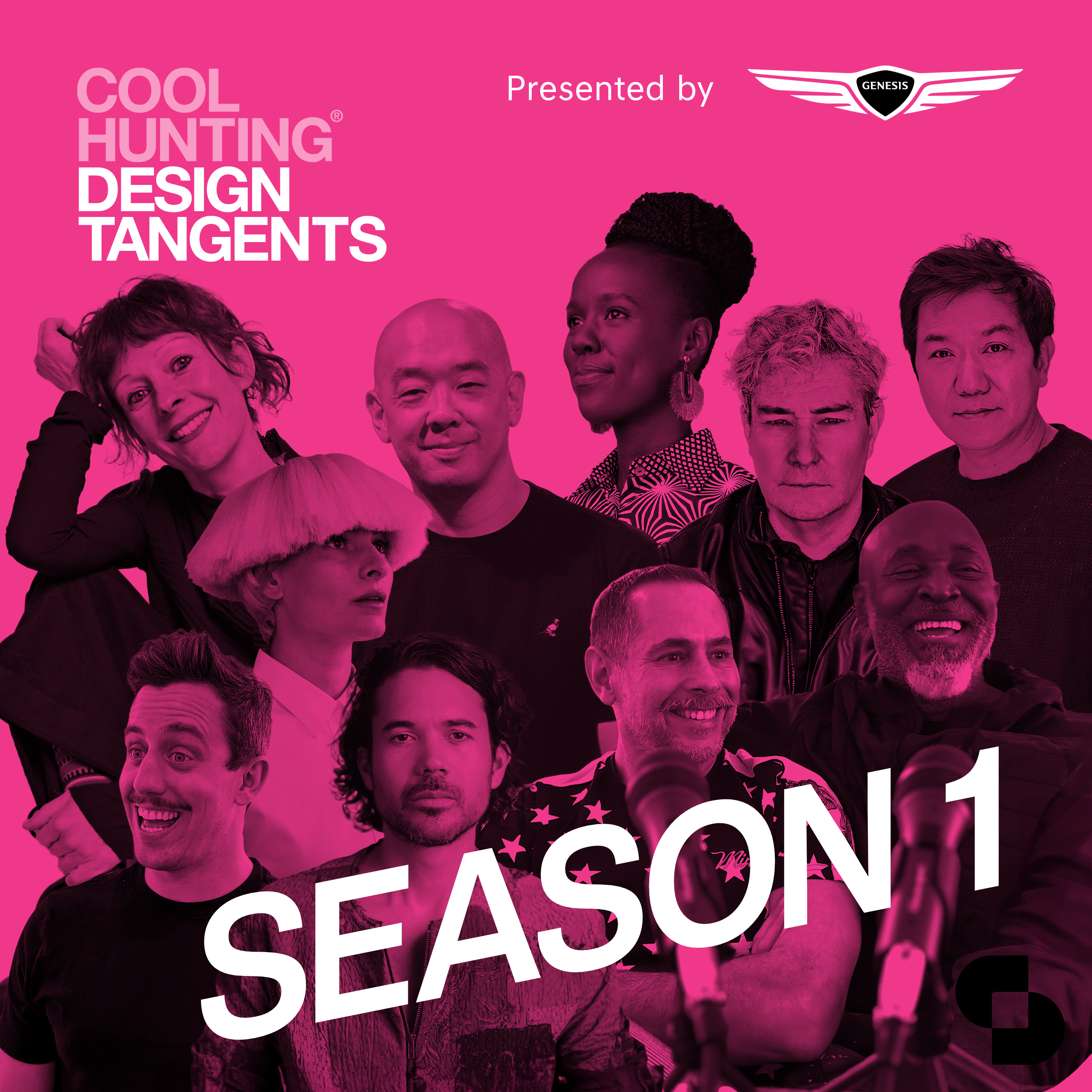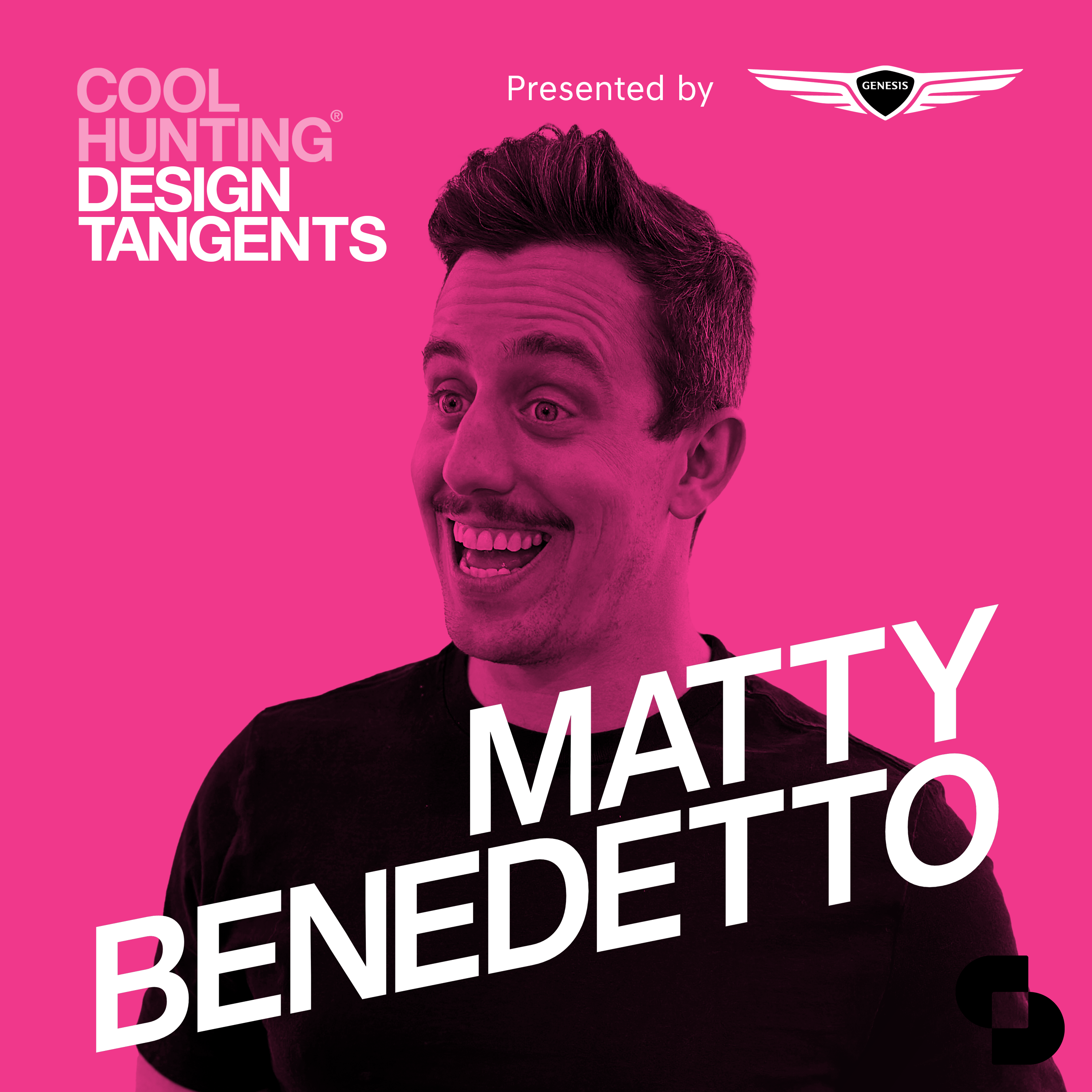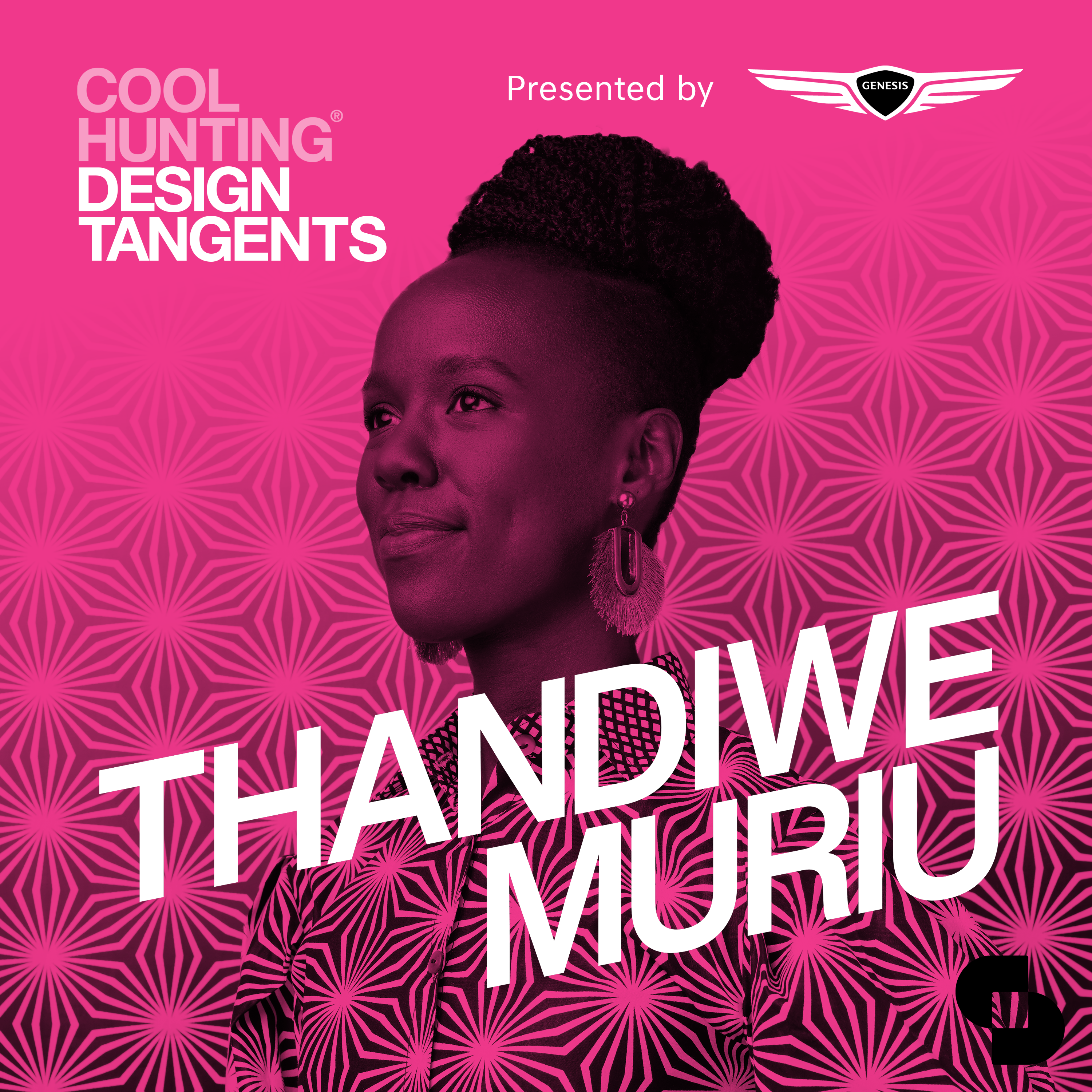A pioneering creative and life-long culture maker, Katie Longmyer is also a talented operator. Known by many as “Good Peoples,” a label given to her during her early club-kid days, that’s exactly the type of person she attracts and it eventually became the name of her events and experiences agency. In this episode Evan and Josh talk to Longmyer about the arc of her career, Co-founding and being the CEO of Proto, community building, Shibari, the future of social media and more.
Discover more shows from SURROUND at surroundpodcasts.com.
This episode was produced by Rob Schulte with editing assistance from Hannah Viti.
Design Tangents is presented by Genesis.
This transcript was created with the help of an automated service, in some cases there may be errors.
Katie: [00:00:00] I was in CEO boot camp for years. And so then when those, those projects shifted and I was put in those seats, it didn’t even occur to me to apply different skills. And then all of a sudden I was an operator because that’s what corporate people called it. I just thought I was a save the day, get it done.
Don’t let the thing break person, you know,
Evan: welcome to design tangents podcast from cool hunting, exploring the creative processes and inspirations that drive change makers. I’m Evan Ornstein
Josh: and I’m Josh Rubin. Ev, I’m excited for this episode with our friend, Katie Longmire. She is both a culture maker And a creative leader. And one of the things that I’m really inspired by is that she can own a PNL and run a company just as easily as she can throw a party.
Evan: And her parties are fun. Yes. She helped create one of New York City’s most successful and long running parties at the Standard Hotel’s rooftop, Le Bain. She’s been Chief of Staff to one of the founders at WeWork. She was the Managing Director at Creative Agency Mother’s New York office. And more recently co founder of Proto, which has just left an exciting time to speak with her as she thinks about what’s next and we get to be part of it.
Josh: Yeah, it’s very exciting in our wide group of friends and collaborators. Katie really stands out as, as one that has this unique mix of skills. And, you know, she has such a high energy presence that pulls, I mean, it pulls me in, it pulls, I feel like it pulls in everyone around her. Katie, Katie’s a misfit and Katie’s also kind of a misfit magnet.
And she, it’s true. She builds cultural experiences and she witnesses culture and she brings you along for the ride.
Evan: And we’re going to hear. About her [00:02:00] journey and everything she did to get where she’s at. But what’s really exciting is that she’s in this place of transition and we’re really gonna dig into what’s next for her and why she thinks self expression is going to be part of that journey.
Josh: Let’s get
Evan: into it.
Josh: There’s always super interesting things happening in your world and. Before we get into current stuff, I kind of want to step back a minute and remember what you were doing when we all met. You had a company called Good Peoples. For nostalgia’s sake, take us, take us through Good Peoples and what, what that was and, and what it is.
Katie: Yeah, good people started a really long time ago. Um, you know, I’m a club kid. I’ve been in nightclubs since I was 16. My mom now knows that, so I don’t have to apologize on podcasts anymore. Um, but, uh, yeah, I was doing the door at, um, a club in D. C. and then a club in Baltimore, um, when I was in high school.
And then I, and that was where I found community. Uh, I was kind of, uh, you know, A misfit weirdo. I always had good friends in high school, but I just sort of, you know, one of these things was not like the other. It was definitely me. I found the other things like me in a club. I often say that nightclubs saved my life.
Um, flash forward to moving to New York, and I was like, I found clubs and people and, um, I was surrounded by creatives and they, we would always just be sitting in the club. It could be like two in the morning and someone would have an idea and everyone would pile on to the idea and then maybe, you know, A week or two later, a project would emerge.
So that had manifested into so many things, magazine release parties, art projects, rogue, you know, [00:04:00] graffiti, warehouses, all kinds of things. And I started to work simultaneously at Warner Brothers Records as an assistant. And so I was, acquiring corporate communication skills. And I realized that one of my superpowers was translating the creativity that was happening around me in a way where it could be palpable for corporate communities.
And so when we were all brainstorming, I would just say, Oh, I know someone I can call to help us with that. And a lot of the times it would be the venue owner, or it would be a brand that I knew how to budget. Cause I heard about it at work and I could reach out to them. And that’s how good people started.
And. The reason we had that name was because we were sitting at a club, I think it was Sway, shout out to Roxy, and Monday’s at Sway, and, um, somebody would always be coming over to the table and they said, oh, they said I should always come over to your table, Katie, because they say you’re always surrounded by good peoples.
So, that was how the name Good Peoples came about. came. It was given to me. I can now claim marriages and careers of people and, you know, managers and DJs who’ve met and things like that. Um, and the way I think we met the first time was on the roof of the standard, which was, I think one of the longest running, um, dance top roof parties in New York.
It ran for 10 years. I think we ended up working together after that, which is, you know, nightlife sort of accidentally thrust me into experiential design, um, and production. And so I started getting tapped by corporate companies to do stuff. And then I also sort of like worked on both sides in the creative community and that, and our collective creative community put us together.
Uh, we did that MasterCard. Project where we produced a party of the same night in multiple cities at the same time
Josh: amazing.
Katie: Yeah, and I think I did DC in New York
Evan: Yeah, it was like six or seven parties simultaneously Alongside a, an event at South by Southwest. So it was bringing [00:06:00] that, that music showcase live to those different markets simultaneously.
It was one of the craziest things I think we’ve ever done.
Katie: Yeah. And then, you know, Good People’s went on to throw, you know, there was a point where I left the music industry and I, uh, opened a music venue. So I opened a club. In Brooklyn called Brooklyn Yard. It was an outdoor club, and we ran that for three years.
I started a music festival in that club that lasted for 10 years called the Brooklyn Electronic Music Festival, and I was just in it. I was throwing probably like 2000 person raves with my business partner two to three nights a week. Now I say that, and Sounds insane. At the time, it seemed, you know, to me, it was like going to the office.
It was just Thursday.
Evan: Yeah,
Katie: literally. It was totally like, you know, I got to go to the office. My office just has like everyone else gets to come. I will forever be a club kid. I will forever find my, you know, I’m, I’m always looking for my community there. And, um, that place of home that you find with people who, you know, share your values and your perspective.
And, um, I’ll probably always, you know, jump on a, like I, I threw a party a couple of months ago just for fun with some people. Like, it’s just, it’s something I’ll never put down.
Evan: It’s, it’s funny because you talk about finding your community. But I guess we think of you as making that community. You’re making that for others.
And yes, you, you’re part of that and you, you’re kind of along for the ride, but I guess we view it from a slightly different angle.
Katie: Thank you. I think that is a very big compliment. I think for me, um, I think a lot of entrepreneurs say this, that they, when you ask them, like, how did you come to make the thing that you made?
They’ll say, I made the thing I wanted. I wanted to be in a certain kind of space. And so I created that space. I don’t think at the time I even thought I was an entrepreneur. Now looking back at it, I’m like, wow, I did all this stuff. But, um, I, I wanted a certain container and it didn’t exist. So I made it and I filled it with what I wanted to be filled with.
And now, um, [00:08:00] you know, in the time we’re living right now, safe containers for people to be in community are such high value and so, um, needed. And, you know, I think they were kind of. More underground at the time and now it’s just so discussed. It’s discussed and um openly recognized So like for you guys to say that to me and take it very seriously and I I do take that role in my life I carry that with me in every room.
I’m in no matter what I always say. I’m not here. I’m representing an entire community of people and um, every conversation, every meeting, no matter who’s in the meeting, you know, probably the authenticity that’s carried me through my corporate life is that like, you’re not just talking to Katie, you’re talking to like the culture, you know, that can be good and bad, but it’s kept me authentic for sure.
Josh: You, from our point of view, also have this superpower of, of doing, of making, of creating, of putting things into action. A lot of people, many, almost everyone has. You know, something they want, and there’s a big difference between wanting and then doing and making happen.
Katie: Yeah, it’s not new. I, I was that annoying little kid when someone told you what to do.
I’d be like, but why? And I think that’s also an entrepreneurial spirit. It’s like, why, why does it have to be that way? Who said so? I don’t, I was literally born like this. Sometimes I think it’s weird. And I, you know, I grew up in a home that was like a very traditional Southern home. It was like very old school.
Um, and somehow I came out like this, you know, like I did challenging every single person. minute of every single conversation just because I, I really, and I think it’s, it’s also, it’s equal parts. It’s challenging, uh, authority a little bit, but I would actually call it more like audacity and it, but it’s also just curiosity.
I really actually wanted to understand why it was, it was a genuine. desire to understand what, why I needed to do what thing. And I think the way it plays out now is mostly in [00:10:00] corporate projects. Um, so many companies have systematic ways of doing things. And some, many of those systems don’t. Um, serve them over time and so I’ll come in and you know, I’m not traditionally trained.
I went to college for playing the cello, um, and so then you’re sitting in like an operational role at a company and someone will say, we have to do it this way. I’ll just look at them and be like, well, I, I want to figure it out. And when you’re figuring something out from scratch and there’s no map, you end up pulling resources.
in a different way and finding another road and sometimes that road can be clunky and sometimes that road can be really unique and creative and more Specific. And if you put the right people around the table, it can be really fun.
Evan: Do you still play the cello?
Katie: Um, not with these nails. I love my nails.
Josh: I’ve only ever seen you with those. Yeah. Those nails are like part of my,
Katie: part of my look, you know, for people who are nail people, I’m wearing gel X stiletto. large nails with chrome polish. Uh, for people who are not nail people, I have very, very long pointy nails that can be likened to claws and they’re a, uh, multi color chrome.
It kind of looks like a beetle or like I dip them in oil and I’ve been getting the same manicure color for like 10 years. It was one of my little things when I went into higher levels of business that I think when I started now expression as a person is a lot more accepted when I first started. Um, I was really self conscious about wanting to be heard.
And I realized that one of the ways I needed to be heard is like show up in a way that people could receive me, but I couldn’t put my whole self away. So my nails would be one of those really subtle things. I would, I talk with my hands a lot and I would watch in meetings while people were just looking at you when you’re staring at my hands and I could see them trying to process what was going on.
But, um, it was just a sort of subtle nod to, you know, my community and where I come from.
Evan: You know, Josh [00:12:00] and I. are pretty heavily tattooed. And when we’re doing consulting and projects for companies, we’ll go in, maybe we’re wearing, you know, a jacket and jeans, you know, in a long sleeve shirt or something, you take the jacket off.
And then you’re having this conversation at some point. It’s not really a flex, but it’s a reminder of why they asked us to come in, which is usually to shake things up or discover things that they hadn’t thought about. And it’s kind of similar, I think, to the, you know, that nail flex. It’s a statement.
Katie: It is.
It symbolizes something. I think more and more people are getting tattoos, but even the type of tattoos you have, where you have them, like I have one on the inside of my palm. I mean, you guys have very serious ink. And it is a reminder that just, it’s almost like a little bit, like, don’t think I’m just gonna toe the line.
You know, I’m not a toe the line person. That’s what I think it says. It’s just like, I’m here to bring a different perspective, a hyper creative perspective, I am alternative to at least what you might think you being the air quotes, like person in the room. Um, and I think it is good. I think it is good to shift the energy and shake it up a little bit.
Evan: So you are kind of unusual in that you’re both a very creative person. You are very much, not just up on culture, but a culture maker. Yet you’re also really an operator you can run a business and you have that’s a kind of unusual mix
Katie: Yeah I think the thing that I found the most when I work with artists and creatives is that’s the thing they struggle with the most because they’re so vulnerable when they’re creating that then to package it up and Sell it to someone or hand it to someone and operationalize the execution of an idea can almost bastardize their process and My creativity expression is people, so that container I create, I’m painting with all the people and the, you know, the curation of the DJs, the lighting, you know, even how I, the language I [00:14:00] use to describe the environment, it’s a different expression of creativity, it’s not as tactical as I think a lot of other kind of creativity is, so I think that allowed me less preciousness with it.
I mean, I still care and I still feel strongly about my ideas. But, um, I think my motivation is to penetrate culture and people. In volume and to be as out there as possible and impact a lot of people, you know, a lot of people talk about culture from sort of like this very small, you know, the, the, the nascent communities that it comes out of and wanting to keep it pure and don’t, you know, sell out and things like that.
But I’m like, what’s better than everyone consuming what you made, like, you know, they don’t have to like it, but I want them to feel it and be impacted by it. And, um, the way you do that is execution. And when I was throwing parties at nightclubs, you know, we were throwing warehouse parties, like, how do you turn the lights on?
How do you serve a bunch of drinks? What do you pour them in? Do I need a cash register? Who’s going to clean up after we leave? You start asking yourselves all these questions and like, by all, you know, I’m lucky I started when I did because I got to learn from a lot of people because I was young. So when I was like a teenager into my 20s, I was following around other people, watching how they did it.
So I got Given a lot of tools, but a lot of times, you know, you just figure it out and you like, I always say a good executive producer is someone who’s done it so many times that they don’t even need to scenario plan. They’ve been in this scenario before. What happens when you run out of all the cups?
What happens if there’s a line down the street, et cetera, et cetera. And that turned me into an operator. I think that a producer, um, and this was actually how I ended up at Mother and is they, you know, the, the US CEO, Peter said this to me. He’s like, I think a producer is like very much like a. Many CEO, you have to talk to vendors, you have to exchange monies, you manage budgets, you have all different kinds of personalities, you’re bridging creative and execution.
And so I kind of, without realizing it, I was in [00:16:00] CEO bootcamp for years. And so then when those, those projects shifted and I was put in those seats, it didn’t even occur to me to apply different skills. And then all of a sudden I was an operator cause that’s what corporate people called it. I just thought I was a save the day, get it done, don’t let the thing break person,
Evan: you know?
What is MOTHER for people who don’t know?
Katie: Um, MOTHER is an incredible creative agency. It’s global. I was in the New York office. In the U. S. there’s a New York and LA office. Known for incredible work, some really iconic work that, you know, some of the most recent work, uh, that really sticks with people is like Target.
They had Target for a really long time as a client. They did a really cool activation at the standard, which a lot of people have seen the video of a bunch of people. They did a light show and dancers in the window of the standard. And that was, I think, really award winning, but they’ve been winning awards for
Evan: a long time,
Katie: for a really long time.
And from a very, they’re known for their very unique Perspective creatively on approaching ideas and, um, They were, uh, I worked at Translation, another ad agency that was known, um, separately for how they do culture work and those were probably the only two agencies that would resonate with me. And when, when Mother was even interested in me, it was on my bucket list to work at Mother.
And so, yeah, that was, I, I ended up getting to be the MD of the New York office there for a year and I really enjoyed it.
Josh: You talk about penetrating culture. You talk about being an operator. And you talk about CEO bootcamp, and I think that all is a really good segue to talking a little bit about Proto.
But before we do that, I just want to throw it a break. So we’ll be right back.
Evan: Katie, something you’ve been working on for the last couple years is a startup called Proto. Can you tell us a little bit about that?
Katie: We call it Proto Collective. It’s a group of co founders, an unusually large group of co founders, um, for what you would expect. And it’s [00:18:00]It was an idea that was fostered out of what was missing in the marketplace.
So it’s a sneaker company first and foremost, most, we call it footwear, cause we didn’t want to be isolated to sneakers. We actually made slippers, um, that were really cool, but, um, we wanted to be equitable. We wanted the products to be admirable. And one of the words that we would always use as one of our core valued is considered everything’s considered when we, came together it was a bunch of minorities.
So it’s a bunch of people who are all self made, all came down our own path, um, all different Um, walks of life and backgrounds. We’re not all, we’re all different races and, you know, sexual identities and things like that. And, uh, we all really cared about the same things. And we were looking at the footwear market and we said, when you look at these companies, the people who make the footwear, The shoes are even just the people at the top of those companies don’t look like the people who are buying the shoes.
And there was just a very clear disconnect in the sneaker industry, which I think everybody is seeing right now is more and more individual companies are coming out and the designs are significantly changing. Um, and so to us, it was like table stakes to be a company full of people who are of the culture and love.
Sneakers and sneaker culture. Um, and also to be sustainable. So we didn’t want to throw the word sustainability around casually because we were very aware of, um, what that can mean. And like, you know, greenwashing is a real thing and we just wanted to be as authentic as possible. So what we said was we’re going to try our best to make these products.
As sustainable as possible and that’s why we landed on considered because we weren’t just considering just that we were also considering who’s wearing them, how we were talking to them, what they saw when we were, you know, putting ourselves out in the world. All of that was considered a fact that people don’t know about sneakers that I did not know until I was in in in it with.
the experts that I worked with was that, [00:20:00] um, the component parts of sneakers aren’t all in the United States. Some of them just simply aren’t here. And so we had this challenge. We said, could we make these all at home? That was part of the sustainability challenge and also community challenge. We wanted to have our products made by and with communities that were local so that there was money going back into the communities that we were working with and collaborating with.
And we actually had to expand to the Americas. So including Canada and Mexico, um, because That’s just where more product was. So we still feel like we got close to home. We still, um, you know, we’re very sustainable, but that was an interesting learning. And one of the things Proto set out to do is create our own, you know, pipeline of making things.
It’s, it’s the extreme design challenge, right? Can you make a shoe that’s cool? Like it’s cool in the culture. A culture kid is going to line up and want to get that shoe. Um, can you make a shoe that feels good on your foot, which in the, in the science of that is really dynamic. And then can you actually make it as sustainable as possible?
And can it be made by minorities? And can it impact, basically can it impact everybody who touches it in a, in a positive way and that doesn’t mean that, you know, you’re not spending money on it, you know, but as soon as you make something, you’re creating waste, as soon as you sell something, you’re participating in consumerism and capitalism, so like, you can’t divorce those things, but we were just saying, As a bunch of minorities who had made our own businesses and been successful and done as little harm as possible in our communities, could we come together and try to tackle that design problem through footwear?
And, um, I think we did. I think we feel really proud about the shoes we made. Uh, we got incredible feedback. Every shoe style that we made was more sustainable than the one that we made. Before. Um, one of our favorite ones was our designer, Nick. He made a slipper. It’s filled with cork, which is an incredibly sustainable material.
It also is really, [00:22:00] it molds to your foot. It absorbs smells. And the only thing about that slipper that wasn’t 100 percent sustainable was the seam that we had to use to To put the whole shoe together, because just the strength of that material, just we couldn’t find anything that was stronger than that one seam, but even the, um, leather of the slippers was all scraps that we found on the floor of the factory, and we asked if we could use them, and they said yes.
So, it was a really fun design challenge, and we kept on doing that, and we made, um, Some apparel with a Latina owned factory out of LA that was local. So it was fun. You get to go there and like touch everything and feel everything. We developed relationships with those people. We met the people who were making our clothes.
We made sure that the money was going back to those people. And even the, our factory partners were innovating on their own. And, um, you know, teaching people in their factory to do different things, creating community work. And so that’s why we picked the partners that we picked. Our vendors would show up and go above and beyond because they were just so stoked to be there.
The community showed up. We, we had so much brand affinity before we even had a lot of styles out just because of how positively people were responding to the efforts that we were making to be considered. And I don’t think I know of another sneaker company that was as diverse as ours, both in partnerships externally and internally in our staff, and so we’re really proud of that.
Evan: I remember we had a conversation. That might sound really boring, but it was talking about, you know, you were really serious about all of these things. Where can we find the right components? And can we find them locally? If not, what’s the next best opportunity? How do we make things sustainable? How do we make it equitable?
How do we create it by and for of the community? And one of those challenges was banking. And you were looking for a bank partner that was [00:24:00] In some way, shape or form, like BIPOC owned, minority owned, female owned, LGBTQ owned, something. Um, and you had a really, really, really difficult, if not impossible time doing that.
Is that, does my memory serve correctly?
Katie: That is true. It was the biggest challenge was finance. I think that it goes without saying that that institutionally wasn’t an accident. Um, all the more reason for us to lean into that in particular. We did find a women run and owned bank that, um, Sophia Bush is actually on the board and introduced us to them, but they had just kind of got, they were getting into this business support aspect of their business.
And so they couldn’t do international wires. Yeah. Um, and so we could bank with them a little bit, you know, like there’s a little bit like, do you hold some money over here and some money over there? And then I’m sure everybody knows there’s a lot of really great, um, black owned banks that are standing up.
They hadn’t at the time we started in 2020. So some of them were stood up, but they were not stood up all the way we landed an amalgamated bank, I think, in New York for a while. Um, and they had a black female CEO, but, um, they had to paper everything manually and use wet signatures. They hadn’t switched over to DACA.
Send or DocuSign. One of the big hurdles was it was 2020 and everybody was in lockdown. So like getting papered Signatures where multiple co founders were in multiple states was like impossible so we had we ultimately had to switch banks and then we went to First Republic and The bank run happened So, banking was quite a challenge for us, but we, we did land somewhere okay, and like, we got through it, and ultimately, it just, if anything, those are the kinds of things where, if a company like Proto can scale to a size of like, you know, think about the size of a Nike or an Adidas, and they say, Um, I learned this at WeWork, but like, you know, if a company at scale says, Hey, I want to do it this way, all of a sudden the partners have the opportunity to show up to provide that because they have someone who’s at [00:26:00] scale who can like, you know, it’s like kind of a mutual partnership of like investment and return when everybody can get there.
So that was one of our goals, right? To generate enough so that we could start pushing our partners to have to show up in the ways that we needed. And, um, And to their credit, they were all amenable and wanted to figure it out with us. And I think we were just a little early to the banking game. I think now it’s, it’s a little bit better, but.
Evan: Which is great. Cause there’s just, you’re talking about the last couple of years. So there’s been a lot of progress in the last three, four years. Exactly. Yeah, exactly. Did
Josh: you hear from the, like the big sneaker companies, Nike, Adidas, others over the, over the course of Proto gaining traction and attention?
Katie: Nothing direct. Everybody on the team. Was deeply connected to the sneaker culture. So we have Jeff Staple, we had Melanie Asani, like there were people who were deeply tapped in and collaborating with other sneaker companies and platforms. There was an article that came out, um, that mentioned, and I’m going to try to not name names, but mentioned one of the co founders and, um, one of her partners called her.
They were just like, what’s going on here, what’s the sentence say that you says you’re doing this thing when, you know, you’re committed to do this other thing and it had already been all carved out and it was fine, but to me, that was like, oh, I was like, you scared over there, you know, like, you know, did you, did you not like that, you know, they noticed and I was kind of like, okay.
Noted. And then we had, uh, one employee poached by a sneaker, another sneaker company that was more like our size and, um, they were incredibly talented as was that other company. So I take that as a compliment. But yeah, like people were definitely around, but moving kind of like that. Like, I don’t think nobody came up being like, what are you doing over here?
Um, I wouldn’t have been mad at it if somebody wanted to call and just say, Hey, I, I kind of was curious. Um, I know that a lot of those [00:28:00] big companies will just come and try to absorb projects like that. It wouldn’t have even been bad if a company like that wanted to absorb us as an entity and maintain the initiative.
Um, but I just don’t know how much, um, we would have been able to maintain that sort of like our own rulebook about how we wanted to move through the world with minority partners when you get absorbed into a big entity. So that, that never happened.
Josh: As a change maker though, as an agent of change. Getting noticed is huge, right?
Getting, you know, that these big companies, these billion dollar companies were seeing what you were doing with Proto and paying attention. You are working on something that is, that is highly desirable for a lot of people. And maybe they need to consider some of the, some of the ethics and the philosophies and practices that you put into place with Proto if they want to be able to move into the future.
That’s, that’s my optimistic point of view.
Katie: I mean, I agree with you. I think there’s this quote from Succession that I love where he’s like, I’m trying to move a million pound tanker because that’s what I imagine. When a company at that scale is trying to pivot, right? You know, for them to pivot and you have that many products and that many people and that many ways of doing and you own your, your warehouses and your supply chain, you own it all.
That is a hard. Not to undo, right? That’s hard. You know, someone like me is like, Oh, my God, what’s here that I can blow up? I can’t wait. You know, I like would love to get in there and blow it all up. But like, you know, that’s it’s not for the faint of heart to and I like I do not envy the leaders of companies like that, who obviously know this is the way because we started from scratch, like I was actually talking about before we didn’t have any limits.
We didn’t have any ways of working. We didn’t have any kind of forced, you know, the industry definitely, um, it. At the very beginning of Proto, almost [00:30:00] every single meeting I had was with a white man over 50, and almost every single one of those men basically, like, caught an attitude with me about, um, what I didn’t understand about how the business worked.
And, um, you know, my fairly polite answer was, I totally respect and hear that, and you’re a very accomplished person, but, um, I don’t really care. You know, it was just like, I, I want to do something else. You know, like, I was like, cool, totally heard that you did it this way, mad long, like, If I have the resource to be able to try another way, I’m going to try.
Um, and what almost, almost every single one of them just jumped on board. Some of those people are component parts of Proto shoot. So, um, and that’s, that’s that innovation of Proto is like, you know, they wanted to know if they did, you know, I think there was so much skepticism because there weren’t people who were resourced to make those changes.
And we were so small and nimble and we were making like, you know, we started with one style and, um, it made it easier to test and iterate. We would do 300 shoes at a time. On purpose so that we could figure out what was going on and everyone who had a pair, we wanted them to tell us what it was like so that we could, you know, make iterations and changes and things like that.
And, and now I think, you know, these big companies, like they don’t have a choice, like this is happening and more and more small companies are going to come and blow up and scale really fast. And, um, they, I mean, we all know they’re all restructuring right now as a result of trying to sort of hack into this matrix and, and, um, And do that.
Evan: You mentioned one of your partners at Proto, Jeff Staple. I just wanna give a shout out to Jeff and, um, for those listeners who have not heard the episode that we did of Design Tangents with Jeff Staple, highly encourage you to do that. Um, we’re gonna head to a quick break and when we come back, we’re gonna talk about what’s next.
We’ll be right back,[00:32:00]
Josh: Katie, from everything that you’re, you, you’ve said. It’s pretty clear that one of the threads throughout your entire career or your entire being is, is about community and about creating connection and about not only finding your tribe, but also helping people find their tribe, helping people recognize the value of tribe.
And thinking about the future and thinking about how like this idea of community is constantly changing and how so many people think about community and immediately start thinking about online community, I completely agree that in person matters. In person is huge. In person is super important. And at the same time, the way we find community is always changing.
So this is a very, like, long winded entry point to a basic question, which are, which is really, what are, what are some of your thoughts on the future of, of community and human connection? Just, you know, basic, not too high level question. Casual. Basic, casual. Casual
Katie: question. I mean, that’s, that’s what I think about all day, every day, all the time.
Um, I think human connection is something that everybody really craves. I think that, um, You know, we’ve seen so many people lean into digital resources to find community, especially during COVID. And, um, and I really am seeing more and more people crave connecting in person. So, uh, membership clubs. Where people are joining a club, whether it’s like, you know, they want to go pick, pick, pick a ball, they, whether they want to go to a co working space, whether they want to go to just a club that’s like a membership club where they hang out, they’re like going to find their tribe, right?
They’re trying to find their people. And um, even dating apps, like everyone’s going online to go offline. Um, and I [00:34:00] actually think that’s going to be, you know, I think there’s right now it feels a little bit like it’s like a quote premium experience, like you’re paying to play, you’re paying, paying to get into these spaces and things like that.
But I actually think that there’s, um, sort of like mass movement towards in person connection. And then that’s going to really, you know, Be a huge pivot. Um, I think that you see that in the language that people are using, and I think the way people are expressing. So you said social media. I think that, you know, the whole look at me CNBC and aspect of social media is now pivoting to let me share about my day.
Let me talk about how I’m feeling. I think destigmatizing mental health, being more vulnerable, that’s all connection. And that’s the kind of thing that’s like, did you give someone a hug today? Like even conversation around intimacy. like physical intimacy between people is starting to become more normalized, which after coming from, you know, kind of like a nightlife community, all of that’s really normal.
You know, there’s a lot of sort of fringe communities that come together, and there’s conversations about safety and containers and things like that, and I, I see those conversations, which used to be fringe conversations, pushing into popular culture en masse, and I think that’s people saying, where are you?
I want to hold you, I want to talk to you, I want to look at you, I want to feel what you’re feeling, whether it’s good or bad. And I think that that actually is going to drive a lot of things. I think we’re starting to see it drive consumer behavior. I think we’re going to start to see, um, I was listening to a podcast about how the company Bayer just got rid of managers.
So that they could have their employees come together in person and connect and bubble ideas up. So it’s even changing infrastructure of companies, partially because like consumers aren’t resonating with the way they’re being talked down to from, you know, advertising and communication. So I think it’s a shift that’s slowly bubbling up.
Um, and I think that everybody’s. Moving in that direction. And I’m hoping that I’m going to see more and more and more of it. And it’s not a premium thing. I actually think member clubs are a cool thing to have, but I think the [00:36:00]hotness of them is going to go away in a second. And I, I actually think, um, experiential art.
is going to really have a moment. So I, you know, Andre 3000 is a really good example of that. He picked up a wooden flute that was like a carved handmade thing. He made music with other people and he’s performing it for people in all these non traditional ways. And everybody can’t get enough of it.
Everyone can’t get enough of their favorite rapper. You know, showcasing art in a completely different way that makes their body feel different. That makes them want to talk to someone about something different.
Evan: Such a great example.
Katie: Yeah, he’s so brilliant. Um, I think I saw like one of those text memes that was like, how much do we want to thank Andre 3000 for regulating everybody’s nervous system?
You know, and like, Facts though, you know, it’s just and but even opening up a conversation when you read all of his interviews And he’s like, why would I do that thing when I could do the other thing? It’s just it’s it’s an a whole opening of people and I think experience design and how people interact like colors lights other humans music Conversation, you know, everyone’s wants to be in circle.
Everyone wants to be in discussion Everyone wants to be around a table down around a dinner. I think all of that is I think we’re coming home You To that in a really beautiful way. And I I’m looking forward to sort of like how that influences capitalism. Obviously,
Evan: how do you balance those two things that that desire to have community in person and also the need or the opportunity to have a much broader experience of having that community digitally?
Like for you personally, I
Katie: think I mean, I like I use both. Um, and I’m, you know, everyone’s scared of a I actually think it’s inevitable. So it’s just sort of like, These are tools at our disposal to help scale. Like, you know, I told you, I, I really want to impact as many people culturally as possible. Um, the internet is [00:38:00] a incredible way to be connected to someone.
Like if I had been a 16 year old kid trying to find my people and the internet was, it existed at that time. And, but like the ability to connect at that, the level that you can connect now as someone, you know, on the other side of the world, In all of these kinds of places, it’s such a resource, right? And then, like, that’s how you can take one step to go to another.
And I’m not gonna pretend that, like, everything’s always warm fuzzies, right? Like, good and bad things can come out of that. But also, community self regulates. Like, being a minority, like, we’re all minorities here. Like, we all came from communities that had to create space. Protect that space, nurture that space, and, um, create, and like, create rules and safety for that space.
So, like, I do believe in that. I do believe communities have that capability. I think that they can, can hold that. Um, and so, like, the internet is a place where it can start, and, or, and it can be a place where you can share. Like, I like using it as the scale for, like, getting the word out so more people can see the art, more people can consume what you made, more people can be invited in, more people can find their people.
But, you know, ultimately, um, I do think that that’s just a road to yourself and to the, to your neighbor, for lack of a better description. It’s like the person sitting next to you can be your neighbor.
Evan: I feel like you’ve just kind of given a vision statement for a new kind of social media. Yeah.
Josh: I mean, this has always been your thing, but I think this is your next thing.
Like, as you’re thinking about what’s, what’s next in your world, passion and purpose that you bring to this conversation. It’s like, yeah, you, obviously you need to be doing that. And yes, you’re an operator and you can do what and where has to, has to be in line with this, with this mission. It’s like, it’s, it is you, it is so you.
Katie: Yeah, I can’t imagine how I would survive if I couldn’t be surrounded by [00:40:00] the misfits like me. Like, they’re the ones who kept me standing this whole time. And so, why, how could I not build around that? You know what I mean? I do believe I can build around that. at scale. I mean, Proto is and was like a experiment of doing that from scratch.
I also believe there’s an opportunity for every single company to go down this road. It’s just, you know, it’s scary for a lot of people just like Imagine the first time you meet someone or you go on your first date or you make your new friend and you kind of want to go up and be like, Hey, like, I like your shirt or whatever, you know, there’s this like, moment of like, should I talk to them?
Or should I? Am I going to connect with this person? But, um, you know, there’s also resonance where you see someone and you’re like, I know I’m going to be friends with that person. Like, I’m like, I know that I think that’s my person over there. I’m going to go find them. And like, I think that that application can be done.
Like, yeah. Inside companies so that people collaborate differently and then with consumers. So like, it’s just really interesting. And, um, I wish I could say I had some kind of templated, you know, amazing method that I could. Sell to everybody. Maybe I need to make one, but I, I do believe that, um, it’s driven by people, but it’s going to start to get reflected around every single thing that they touch and it’s going to influence.
I mean, a lot of what you’re
Josh: describing is, you know, it’s, it is energy, right? It is the, the, the, the way we, um, vibe off of each other. And I think that a lot of people are comfortable with certain constructs that help describe energy. And I’ve actually been thinking a lot about, you know, and I haven’t done the research yet, but are there, are there any AIs out there that are factoring in astrology?
Because that could get really interesting. Um, and yeah, there’s lots of astrology apps, there’s CoStar, there’s The Pattern, but, Uh, I don’t think any of them are [00:42:00] using AI yet, but it could, It’s certainly, astrology is certainly a construct that people may or may not, Subscribe to, but they certainly are familiar with, and I think familiarity matters when trying to help people understand the importance of energetic connection and how that influences the ability to get to know someone or collaborate with someone or, you know, move through the world in a way that’s impactful.
Katie: I totally agree. I think one of the unfortunate aspects of language is how, or at least the English language is how limiting it is, and so, Mm-Hmm. . Um, a lot of times people want, like, I’m, I’m a mixed race, for example, and people are like, but what are you, though? You know? And I was like, oh, I’m sorry, am I supposed to pick one of the things and just be like, I’m this?
You know? And I think it’s, it’s actually, it took me a long time to realize it was to make them more comfortable. They were they were what they were actually saying is I want to know how to interact with you. So I need you to label yourself in a way that I can understand so that I can then engage. And you know, it’s not even a bad thing.
It’s just a way of trying to understand. And, um, to me that the word resonance is something I’m like super fascinated with. You know, the, You know, in physics, just, you know, energy that bounces off of another thing. And if they do that in a way that can become symbiotic is really cool. And there’s, um, there’s a book called your brain on art.
Josh: Ivy Ross. That’s really
Katie: interesting. Yes. And she writes, she studied resonance. And so to me, that book is super interesting because it’s taking science and creativity and Humans and smashing them all together in a purposeful way. And, um, I, I just highly recommend that book and also just think that that’s, um, it’s not woo woo shit.
You know what I mean? Like, like to your point, like astrology is a way, like to say, what’s your sign? So you can show someone sort of like a combination of factors that influence [00:44:00] you or make you feel a certain way. And, um, there’s versions of that across different things. And, uh, I would love to see AI.
That to me is when AI gets really interesting. It’s sort of like the, the speed at which you can gather information and collect it and compare it and, um, play with data is super interesting.
Evan: I do want to get into Shibari.
Katie: Yeah, we can.
Josh: Can you tie knots with those nails?
Katie: Oh, I do not. I’m not a top.
Josh: All right.
So you don’t need to tie knots with those nails.
Katie: Yeah. I’m a, yeah, I’m a rope bunny. Yeah, no, I don’t need to tie knots. I, I literally, the most recent time I was tied, I was so in awe of the person and their meditative process that I thought about it. Being like, this looks like such a meditative act that would feel really satisfying.
And then I said, I thought to myself, I was like, yeah, no, I don’t want to do that. I don’t want to tie other people because it’s, it’s, it’s such an, um, at least in my experience with it, Shabari and rope tying, you know, there’s all kinds of experts who should talk about it much more extensively than me. And I think, um, the first person I experienced Shabari with was Marie Sauvage and she has a podcast out.
So definitely check that out. Um, but for me, um, the art of it is what. Drew me to it sort of the shapes and that that art could be made with the body But there’s this connection that happens between the two people. It’s a resonance connection obviously and and The types of ways that I like to connect, I don’t think I would want to lead.
I, I think in my experience, um, when you’re allowing someone to tie you, um, it’s a, it’s a conversation and it’s mutual. And then, um, you know, in a lot of BDSM communities and like, I, I don’t even want to just shove Shabari into there. So disclaimer, I’m not shoving Shabari into there. I’m just making an analogy of, um, [00:46:00] sort of like shared power.
There’s a mistaken. There’s a mistaken communication that like the Dom is in charge of the sub when actually in my experience It’s like a very beautiful Sacred intimate space where the sub is actually holding a lot of the power because they’re the person who decides like yes I want to be tied. Yes. I trust you I, this is okay with me.
Like, you know, it’s like all the permission is coming from the person who’s receiving. And, um, so the beauty of Shabari is like, I would like you to make me a piece of art. At least this is what I tell myself is like, I want to be, I’m giving myself over to a piece of art, to the, whatever limitations that I personally have.
And then I’m actually trusting the other person to feel some of my limit. There’s a lot of nonverbal communication for me. Um, I’m not a very big verbal communicator, but there’s also just sort of like a trade off of. Of sharing in resonance like with the two people and so what ends up happening is a combination of What’s happening with you and what’s happening with the person who’s tying you and like their style of tying and like?
Um, the environment you’re in and, and everything, and it, it’s so powerful. Talk about being held. You literally are, are being held, like, in rope, you, you’re suspended, and it, it, for me, it creates a incredible sense of peace. I think you can read a lot about the sensations that happen when you, Give yourself over in that way.
And, um, I think maybe because I’ve been running around so much in my life it, Shabari is new for me and it came into my life because I’ve been admiring it for a long time. And then when I tried it, it was literally like, boom, it was over. And, um, One of the women who tied me she said a lot of that happens to a lot of people the second they touch rope It’s just like you just sort of it opens up a portal of experiences for you.
Um, and Another thing that’s really interesting for me is I’m very aware of everyone in the room So I think that’s a nightclub thing Like I could literally feel the energy of each individual in a nightclub and I know that there’s volumes of [00:48:00] one of my my party tricks is Um, tell you how many people are in the room, and then looking at the clicker, kind of like the jar of jelly beans kind of thing.
Um, and I’m usually like, can do that within, I can do that, or and I can touch a pile of money and tell you how much money is in it, if I know what bills they are. Those are my two party tricks from nightlife, because I had to deal with both of those things so much. But, um, uh, when I get tied, I lose all awareness of everyone other than the other person.
It’s crazy. Like, I, um, hosted an intimate gathering of all women so they could see and experience what Shabriah could be like. It was all dear friends of mine. When I came down, I looked up and I was like, oh, hi guys.
Evan: You were very present, but you were also not aware, if that makes sense.
Katie: Yeah. Deep in my body, deep in my, um, subtle body, um, deeply connected with the person who I was working with.
Um, I couldn’t have even told you how long I was up there. I couldn’t have told you if I was fully upside down or not. I saw videos and photos after that I thought were beautiful. Like half the room was crying, so moved by what was happening. And, um, it was so interesting. It’s, it’s one of the first times I’ve had one experience and then.
When I went to share it with everyone, their experience was so different than mine. It was equally beautiful and powerful, but it was so different. And I think maybe that’s one of the reasons, um, it’s so powerful for me.
Evan: I love that. Thank you for sharing that.
Josh: I, I, I love the ground that we’ve covered in this conversation.
so much for joining us, Katie.
Evan: And here’s to what’s next, so hopefully we can help be a part of that in whatever way we can.
Katie: Thank you for having me.
Evan: Katie, I know your schedule’s really busy, and we very much appreciate you taking the time to sit down with us and share so much about, about you. It’s, uh, you don’t normally talk about yourself, so we’re really [00:50:00] grateful that you’re sharing this with us and all of our listeners.
Josh: Thank you so much, Katie. It’s always a pleasure. Inspiring to just, it’s just a chat. If you’re new to cool hunting, we’ve been reporting on creativity and innovation since 2003 visit cool hunting. com or cool hunting on any social media channel
Evan: to see what we think is worth sharing. If you enjoy design tangents, please follow us wherever you listen to your podcasts, every positive review lead is very much appreciated.
Josh: Thank you to master and dynamic, the official headphones of the surround network. And also thank you to Matthew Deer, who created the original music for Design Tangents.
Evan: Design Tangents is produced by Surround, part of the Sandow Design Group. Discover more design focused shows from Surround at surroundpodcasts.
com. This episode was produced and edited by Rob Schulte.
Josh: Transcripts, show notes, and links for each episode of Design Tangents can be found on our show page. At surroundpodcasts. com and on coolhunting. com.

